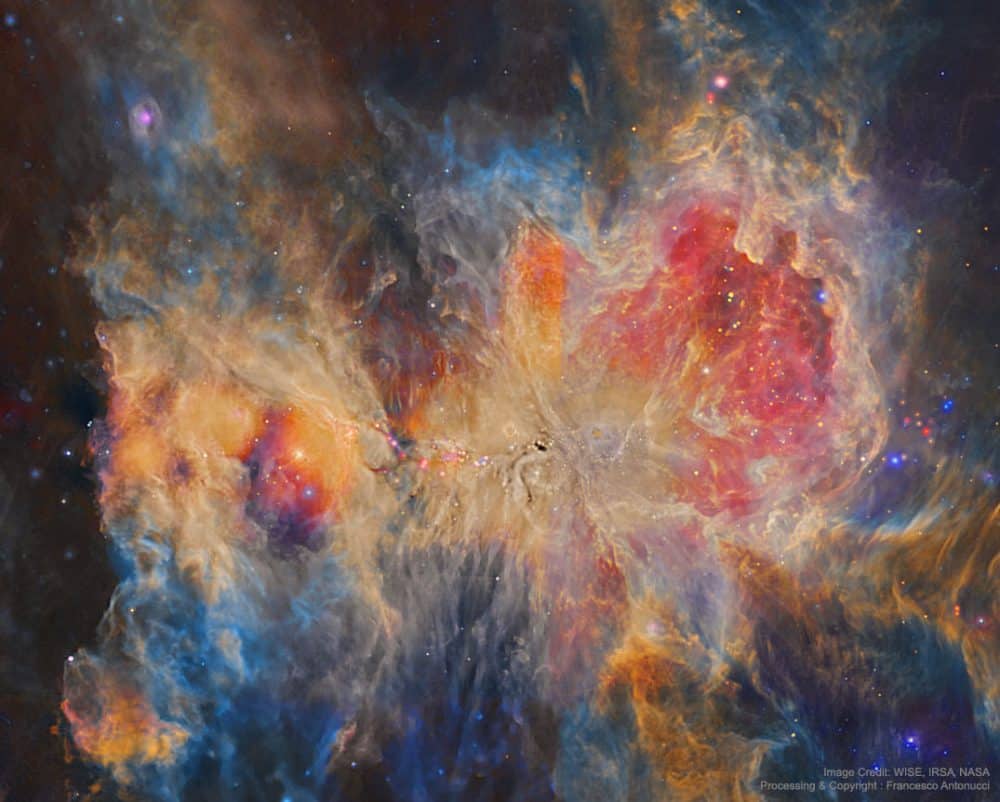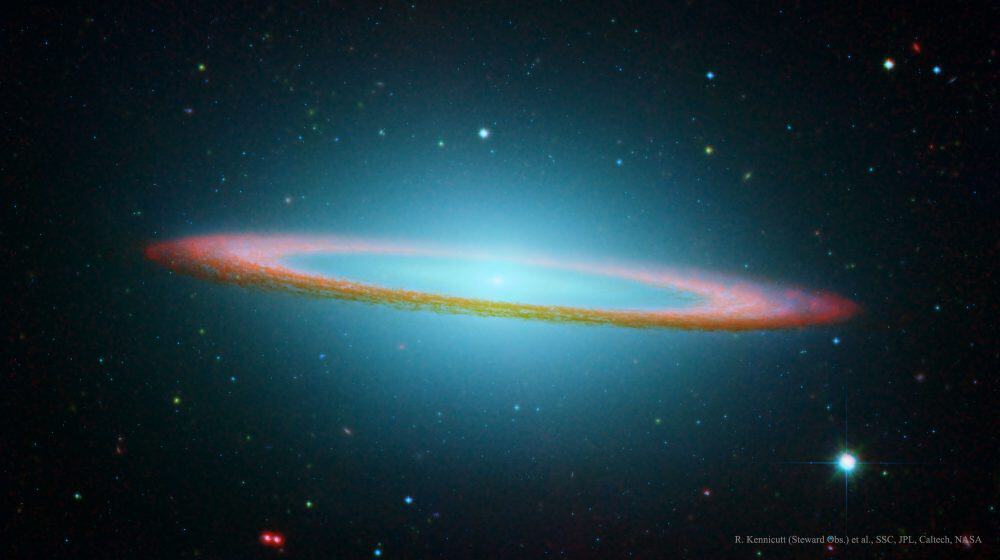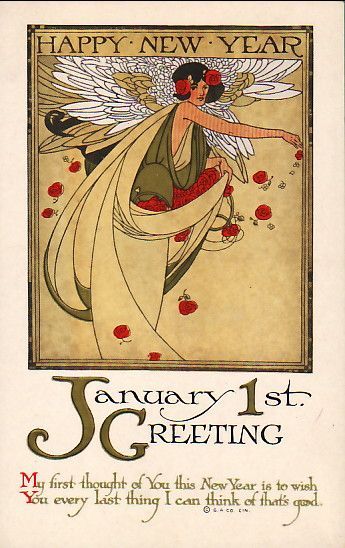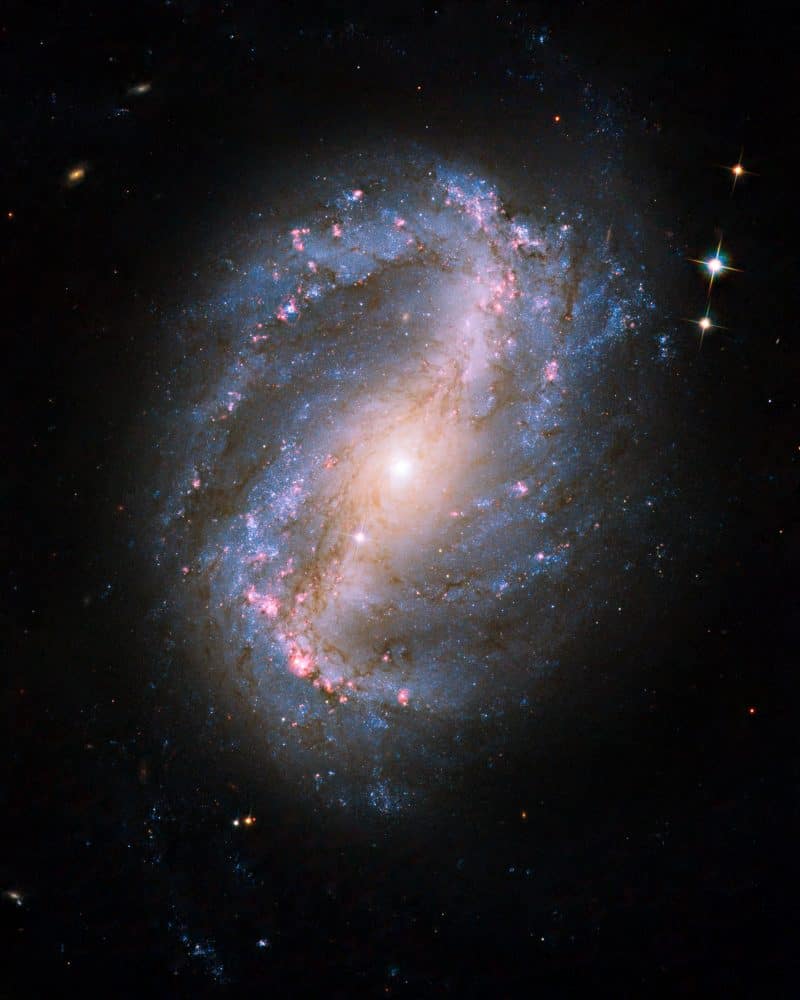Blog
Herbert Horatio Nichols (3 January 1919 – 12 April 1963) was an American jazz pianist and composer who wrote the jazz standard “Lady Sings the Blues“. Obscure during his lifetime, he is now highly regarded by many musicians and critics.
He was born in San Juan Hill, Manhattan in New York City, to parents from St. Kitts and Trinidad, and grew up in Harlem. During much of his life he took work as a Dixieland musician while working on the more adventurous kind of jazz he preferred. He is best known today for these compositions, program music that combines bop, Dixieland, and music from the Caribbean with harmonies from Erik Satie and Béla Bartók.
His first known work as a musician was with the Royal Barons in 1937, but he did not find performing at Minton’s Playhouse a few years later a very happy experience. The competition didn’t suit him. However, he did become friends with pianist Thelonious Monk even if his own critical neglect would be more enduring.
more...The Great Nebula in Orion is an intriguing place. Visible to the unaided eye, it appears as a small fuzzy patch in the constellation of Orion. But this image, an illusory-color four-panel mosaic taken in different bands of infrared light with the Earth orbiting WISE observatory, shows the Orion Nebula to be a bustling neighborhood of recently formed stars, hot gas, and dark dust. The power behind much of the Orion Nebula (M42) is the stars of the Trapezium star cluster, seen near the center of the featured image. The orange glow surrounding the bright stars pictured here is their own starlight reflected by intricate dust filaments that cover much of the region. The current Orion Nebula cloud complex, which includes the Horsehead Nebula, will slowly disperse over the next 100,000 years.
more...Troy Andrews (born January 2, 1986), also known by the stage name Trombone Shorty, is an American musician, producer, actor and philanthropist from New Orleans, Louisiana. He is best known as a trombone and trumpet player but also plays drums, organ, and tuba. He has worked with some of the biggest names in rock, pop, jazz, funk, and hip hop. Andrews is the younger brother of trumpeter and bandleader James Andrews and the grandson of singer and songwriter Jessie Hill. Other musical family members are cousins Glen David Andrews and the late Travis “Trumpet Black” Hill. Andrews began playing trombone at age four, and since 2009 has toured with his own band, Trombone Shorty & Orleans Avenue.
Troy Andrews was born in New Orleans and grew up in the Tremé neighborhood. Troy graduated in 2004 from Warren Easton High School. At the age of 4, he appeared onstage with Bo Diddley at the New Orleans Jazz & Heritage Festival. He participated in brass band parades as a child, becoming a bandleader by the age of six. In his teens, he was a member of the Stooges Brass Band. He attended the New Orleans Center for Creative Arts (NOCCA) along with fellow musician Jon Batiste.
more...Little Smokey Smothers (January 2, 1939 – November 20, 2010) was an African-American Chicago blues guitarist and singer. His elder brother was the bluesman Otis “Big Smokey” Smothers (died 1993), with whom he was sometimes confused.
Albert Abraham “Abe” Smothers was born in Tchula, Mississippi, learned to play the guitar at the age of 15, and relocated to Chicago two years later.He soon appeared on stage, playing with Arthur “Big Boy” Spires, Magic Sam, Otis Rush and Lazy Bill Lucas. In 1958 he joined up with Howlin’ Wolf, and he accompanied Wolf in a recording session for Chess Records the following year. Tracks Smothers contributed to include “I’ve Been Abused”, “Howlin’ for My Darling”. and “Mr. Airplane Man”
more...This floating ring is the size of a galaxy. In fact, it is a galaxy — or at least part of one: the photogenic Sombrero Galaxy, one of the largest galaxies in the nearby Virgo Cluster of Galaxies. The dark band ofdust that obscures the mid-section of the Sombrero Galaxy in optical light actually glows brightly in infrared light. The featured image, digitally sharpened, shows the infrared glow, recently recorded by the orbiting Spitzer Space Telescope, superposed in false-color on an existing image taken by NASA’s Hubble Space Telescope in optical light. The Sombrero Galaxy, also known as M104, spans about 50,000 light years across and lies 28 million light years away. M104 can be seen with a small telescope in the direction of the constellation Virgo.
more...
Brooklyn-based musician Brian Prunka was already an accomplished jazz guitarist in New Orleans when a series of events led him to become a beginner again, learning the oud (Arabic fretless lute) and Arabic music from the ground up. Fifteen years later, he is the leader of Nashaz, a group that finds unexpected kinship between jazz and traditional Arabic music, garnering praise and support from Arabic music luminaries like Simon and Najib Shaheen, Youssef Kassab, and Ray Rashid in response to their recently released self-titled album (www.nashazmusic.com). The journey took him from New Orleans to Brooklyn, and eventually to Haifa and Ramallah, in the process finding his own voice with an authenticity that has won him respect within the Arabic music community, whether performing with Simon Shaheen’s Qantara, Zikrayat, or the New York Arabic Orchestra. The upcoming Nashaz concert November 9th at Alwan for the Arts, an Arabic cultural center in lower Manhattan that is known for its presentation of renowned musicians from the Arab world, promises to be an intimate event celebrating the recent CD release among their friends and peers in the NY community of Arabic musicians and music lovers.
more...Milton “Bags” Jackson (January 1, 1923 – October 9, 1999) was an American jazz vibraphonist, usually thought of as a bebop player, although he performed in several jazz idioms. He is especially remembered for his cool swinging solos as a member of the Modern Jazz Quartet and his penchant for collaborating with several hard bop and post-bop players.
A very expressive player, Jackson differentiated himself from other vibraphonists in his attention to variations on harmonics and rhythm. He was particularly fond of the twelve-bar blues at slow tempos. He preferred to set the vibraphone‘s oscillator to a low 3.3 revolutions per second (as opposed to Lionel Hampton‘s speed of 10 revolutions per second) for a more subtle tremolo. On occasion, Jackson sang and played piano professionally.
Jackson was born on January 1, 1923 in Detroit, Michigan, the son of Manley Jackson and Lillie Beaty Jackson. Like many, he was surrounded by music from an early age, particularly that of religious meetings: “Everyone wants to know where I got that funky style. Well, it came from church. The music I heard was open, relaxed, impromptu soul music” (quoted in Nat Hentoff’s liner notes to Plenty, Plenty Soul). He started on guitar when he was seven, then on piano at 11.
more...Bulee “Slim” Gaillard (January 9, 1911 – February 26, 1991), also known as McVouty, was an American jazz singer and songwriter who played piano, guitar, vibraphone, and tenor saxophone.
Gaillard was noted for his comedic vocalese singing and word play in his own constructed language called “Vout-o-Reenee”, for which he wrote a dictionary. In addition to English, he spoke five languages (Spanish, German, Greek, Arabic, and Armenian) with varying degrees of fluency.
He rose to prominence in the late 1930s with hits such as “Flat Foot Floogie (with a Floy Floy)” and “Cement Mixer (Put-Ti-Put-Ti)” after forming Slim and Slam with Leroy Eliot “Slam” Stewart. During World War II, Gaillard served as a bomber pilot in the Pacific. In 1944, he resumed his music career and performed with notable jazz musicians such as Charlie Parker, Dizzy Gillespie, and Dodo Marmarosa.
In the 1960s and 1970s, he acted in films—sometimes as himself—and also appeared in bit parts in television series such as Roots: The Next Generations.
In the 1980s, Gaillard resumed touring the circuit of European jazz festivals. He followed Dizzy Gillespie’s advice to move to Europe and, in 1983, settled in London, where he died on 26 February 1991, after a long career in music, film and television, spanning nearly six decades.
Along with Gaillard’s date of birth, his lineage and place of birth are disputed. Many sources state that he was born in Detroit, Michigan, though he said that he was born in Santa Clara, Cuba.
more...Germany Neo Medieval
more...This is the first image of a celestial object taken with the newly repaired Advanced Camera for Surveys (ACS). The camera was restored to operation during the STS-125 Servicing Mission to upgrade the NASA/ESA Hubble Space Telescope.
The barred spiral galaxy NGC 6217 was photographed on 13 June and 8 July 2009, as part of the initial testing and calibration of Hubble’s ACS. The galaxy lies up to 90 million light-years away in the north circumpolar constellation Ursa Major.
more...Henry John Deutschendorf Jr. (December 31, 1943 – October 12, 1997 Roswell, NM), known professionally as John Denver, was an American singer-songwriter, record producer, actor, activist, and humanitarian, whose greatest commercial success was as a solo singer. After traveling and living in numerous locations while growing up in his military family, Denver began his music career with folk music groups during the late 1960s. Starting in the 1970s, he was one of the most popular acoustic artists of the decade and one of its best-selling artists. By 1974, he was one of America’s best-selling performers, and AllMusic has described Denver as “among the most beloved entertainers of his era”.
Denver recorded and released approximately 300 songs, about 200 of which he composed, with total sales of over 33 million records worldwide. He recorded and performed primarily with an acoustic guitar and sang about his joy in nature, his disdain for city life, his enthusiasm for music, and his relationship trials. Denver’s music appeared on a variety of charts, including country music, the Billboard Hot 100, and adult contemporary, in all earning 12 gold and four platinum albums with his signature songs “Take Me Home, Country Roads“, “Annie’s Song“, “Rocky Mountain High“, “Calypso“, “Thank God I’m a Country Boy“, and “Sunshine on My Shoulders“.
Denver appeared in several films and television specials during the 1970s and 1980s. He continued to record in the 1990s, also focusing on environmental issues by lending vocal support to space exploration and testifying in front of Congress in protest against censorship in music. He lived in Aspen, Colorado, for much of his life and was known for his love of Colorado, which he sang about numerous times. In 1974, Denver was named poet laureate of the state. The Colorado state legislature also adopted “Rocky Mountain High” as one of its two state songs in 2007.
Denver was an avid pilot who died at the age of 53 in a single-fatality crash while flying his experimental Rutan Long-EZ canard aircraft.
more...Odetta Holmes (December 31, 1930 – December 2, 2008), known as Odetta, was an American singer, actress, guitarist, lyricist, and a civil and human rights activist, often referred to as “The Voice of the Civil Rights Movement”. Her musical repertoire consisted largely of American folk music, blues, jazz, and spirituals. An important figure in the American folk music revival of the 1950s and 1960s, she influenced many of the key figures of the folk-revival of that time, including Bob Dylan, Joan Baez, Mavis Staples, and Janis Joplin. Time magazine included her recording of “Take This Hammer” on its list of the 100 Greatest Popular Songs, stating that “Rosa Parks was her No. 1 fan, and Martin Luther King Jr. called her the queen of American folk music.”
Odetta was born in Birmingham, Alabama. She grew up in Los Angeles, where she attended Belmont High School. She then studied music at Los Angeles City College while employed as a domestic worker. She had operatic training from the age of 13. Her mother hoped she would follow Marian Anderson, but Odetta doubted a large black girl would ever perform at the Metropolitan Opera. Her first professional experience was in musical theater in 1944, as an ensemble member for four years with the Hollywood Turnabout Puppet Theatre, working alongside Elsa Lanchester. In 1949, she joined the national touring company of the musical Finian’s Rainbow.
more...Jonah Jones (born Robert Elliott Jones; December 31, 1909 – April 29, 2000) was a jazz trumpeter who created concise versions of jazz and swingand jazz standards that appealed to a mass audience. In the jazz community, it can be argued that he might be best appreciated for his work with Stuff Smith. He was sometimes referred to as “King Louis II,” a reference to Louis Armstrong. Jones started playing alto saxophone at the age of 12 in the Booker T. Washington Community Center band in Louisville, Kentucky before quickly transitioning to trumpet, where he excelled.
Jones was born in Louisville, Kentucky. Jones began his career playing on a river boat named Island Queen, which traveled between Kentucky and Ohio. He began in the 1920s playing on Mississippi riverboats and then in 1928 he joined with Horace Henderson. Later he worked with Jimmie Lunceford and had an early collaboration with Stuff Smith in 1932. From 1932 to 1936 he had a successful collaboration with Smith, but in the 1940s he worked in big bands like Benny Carter‘s and Fletcher Henderson‘s. He would spend most of a decade with Cab Calloway‘s band which later became a combo.
more...Kautokeino, Sápmi Norway
more...More Posts
- Miles Davis
- Cosmos Comet 12P/Pons-Brooks
- Fred Frith
- Buddy DeFranco
- World Fusion Subhen Chatterjee
- Daily Roots Yabby You
- Aston Family Man Barrett Memorial
- Donald Kinsey Memorial
- Temple Israel Erev Shabbat 2-16-24
- Cosmos HFG1 & Abell 6
- Buddy Deppenschmidt
- Bill Doggett
- Joe Venuti
- Flamenco Fridays Camarón y Paco Cepero
- Daily Roots Bob Marley
- Cosmos NGC 253
- Ali Campbell
- Henry Threadgill
- Harold Arlen
- Kokomo Arnold



